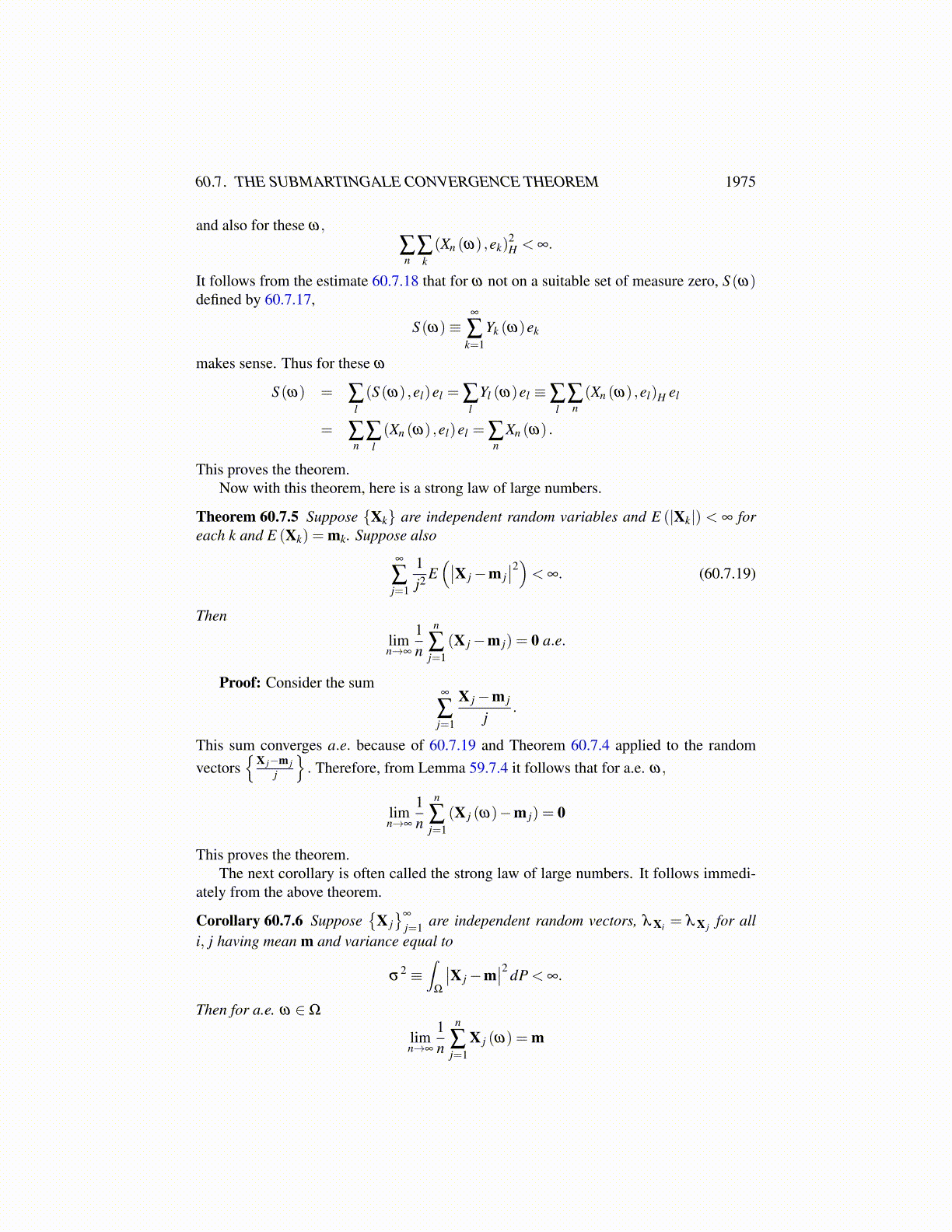
60.7. THE SUBMARTINGALE CONVERGENCE THEOREM 1975
Proof: Let Fn ≡ σ (X1, · · · ,Xn) . Consider Sn ≡ ∑nk=1 Xk.
E (Sn+1|Fn) = Sn +E (Xn+1|Fn) .
Letting A ∈Fn it follows from independence that∫A
E (Xn+1|Fn)dP ≡∫
AXn+1dP
=∫
Ω
XAXn+1dP
= P(A)∫
Ω
Xn+1dP = 0
and so E (Xn+1|Fn) = 0. Therefore, {Sn} is a martingale. Now using independence again,
E (|Sn|)≤ E(∣∣S2
n∣∣)= n
∑k=1
E(X2
k)≤
∞
∑k=1
E(X2
k)< ∞
and so {Sn} is an L1 bounded martingale. Therefore, it converges a.e. and this proves thetheorem.
Corollary 60.7.3 Let {Xk} be a sequence of independent real valued random variablessuch that E (|Xk|)< ∞,E (Xk) = mk, and
∞
∑k=1
E(|Xk−mk|2
)< ∞.
Then ∑∞k=1 (Xk−mk) converges a.e.
This can be extended to the case where the random variables have values in a separableHilbert space.
Theorem 60.7.4 Let {Xk} be a sequence of independent H valued random variables whereH is a real separable Hilbert space such that E (|Xk|H)< ∞,E (Xk) = 0, and
∞
∑k=1
E(|Xk|2H
)< ∞.
Then ∑∞k=1 Xk converges a.e.
Proof: Let {ek} be an orthonormal basis for H. Then {(Xn,ek)H}∞
n=1 are real valued,independent, and their mean equals 0. Also
∞
∑n=1
E(∣∣∣(Xn,ek)
2H
∣∣∣)≤ ∞
∑n=1
E(|Xn|2H
)< ∞
and so from Theorem 60.7.2, the series,∞
∑n=1
(Xn,ek)H